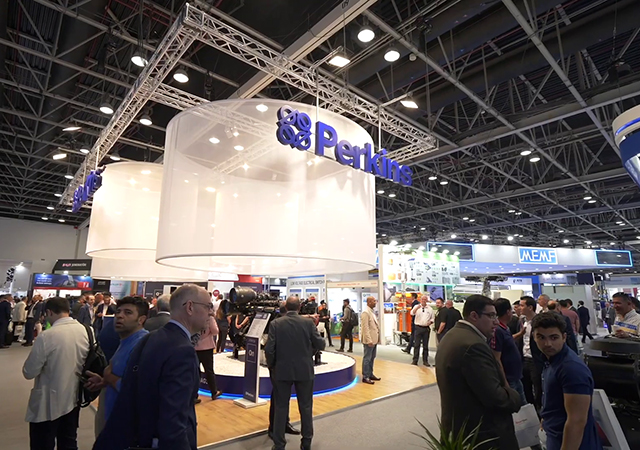 Ahmed Galal Ismail
Ahmed Galal Ismail
The dearth of trade between countries in the region is laid bare in the inaugural Menap Economic Integration Barometer, which shows that intraregional exports account for only 2.9% of total Menap GDP. This compares to a global average of 7.9% and 22% across the European Union (EU), Norway, Switzerland, and the UK.
However, when looking at the power of the region to supply goods abroad, Menap (Middle East, North Africa, Afghanistan and Pakistan) dominates other regions, with global exports valued at 34% of GDP compared to a global average of 25.5%, said the world’s first Menap Economic Integration Barometer launched by Majid Al Futtaim, the leading shopping mall, communities, retail and leisure pioneer across the Middle East, Africa, and Asia, at Davos 2023.
22% of Menap’s trade to the world stems from fossil fuels, with an additional 7% from metals and chemicals. As such, Menap, a cluster of individually resource-rich countries with fewer distinct manufactured goods (non-oil-based) to export, has less trade between regions as a portion of GDP.
Lack of integration
The lack of integration is not confined to physical goods. The intraregional flow of intellectual property (IP) is just 1.4% compared to 62% in the EU, Norway, Switzerland, and the UK with much of the latter being driven by pharmaceutical developments, bio-tech ideation, and aerospace innovation.
FDI inflows to Menap lags top performing regions, and Menap countries have lower investments in each other relative to other regions. However, this is not uniform across countries in Menap; Dubai has been ranked the world’s top destination for FDI for 2 consecutive years.
The Menap region does, however, perform better than much of the rest of the world on unemployment numbers, with only 7.4% compared to the global average of 7.6%. However, the barometer also raises concerns about migratory trends in the region. In 2019, nearly 15 million people migrated intra-regionally in Menap, with approximately 50% of all professionals who moved, leaving the region completely. This compares to only 0.5% of the total population leaving North America in 2021, compared to Menap’s 2%. One can assume that sufficient working, studying, and living opportunities are the key drivers.
Four key metrics
Designed to trigger dialogue and foster collective action by following the region’s progress across four key metrics - trade, intangibles, capital and people - the Barometer provides stakeholders with tools to help standardise the interpretation and definition of economic integration. A major insight from developing the Barometer was the scarcity of data available and inconsistency in which the different metrics are measured.
Launched in partnership with the World Economic Forum and McKinsey & Company, the Barometer, which has been developed to systematically track progress on an annual basis, will offer a deeper understanding of the status of Menap economic integration, and the region’s interconnectedness with other world markets.
Ahmed Galal Ismail, Chief Executive Officer at Majid Al Futtaim – Holding, will discuss the Barometer during a special session on closer economic integration that explores how common standards, selective deregulation, the sharing of data and the free movement of goods and services could catalyse inter- and intraregional trade across the region and help unlock its full economic potential.
Intra-regional prosperity
Ismail said: "Since publishing our inaugural report into the impact greater economic integration could afford the Menap region, we have seen a number of impressive and important steps taken to foster improved intra-regional prosperity. Whilst extremely encouraging, these efforts have also highlighted the development disparity across the Menap region. We recognise that now, more than ever in this age of geopolitical instability, economic uncertainty, and climate crisis, that our success hinges on our collective efforts to champion improved economic integration across our region.
“The Menap Economic Integration Barometer presents a baseline from which to assess our progress, providing transparent and systematic tracking to trigger dialogue and initiate action. Our aspiration is to publish an updated barometer, coinciding each year with the World Economic Forum, and engage with key stakeholders at Davos on the results and the key imperatives to drive incremental progress.”
Over several months, Majid Al Futtaim has worked with McKinsey Global Institute to develop a barometer capable of providing real-world insights that demonstrate where the region stands today, how it is evolving and where progress will take it, all based on real-world metrics. Furthermore, with the support of the regional and global community, a repository of clean, granular and consistent data can now be collected, which will allow the Menap Economic Integration Barometer to evolve over time to play that role.
Majid Al Futtaim’s work in developing the Menap Economic Integration Barometer follows several years of leadership in promoting discussion on the importance of economic integration as an enabler of sustainable and inclusive economic development. The company’s first report - A Perspective on the Economic Potential of the Menap Region was launched in 2020, followed by a revised edition, The Time is Now: Unlocking the Economic Potential of Menap, which was released at the May 2022 World Economic Forum Annual Meeting.-- TradeArabia News Service









